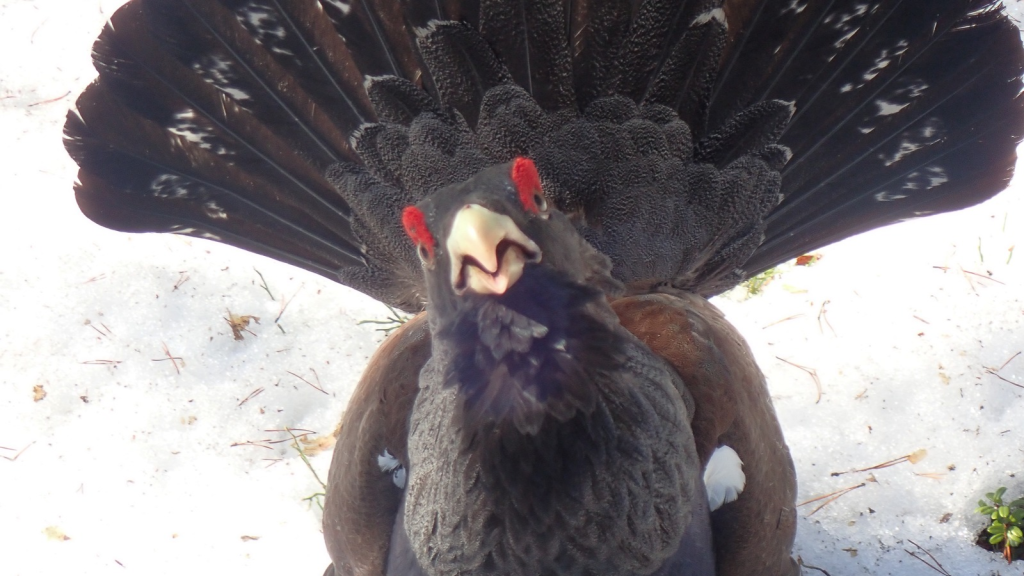The capercaillie, a magnificent bird of the grouse family, is a true wonder of British wildlife. These impressive creatures, once widespread across the UK, are now confined to the ancient Caledonian pine forests of Scotland. With their striking appearance and fascinating behaviours, capercaillies are fascinating and beautiful. From their incredible size to their unique mating rituals, these birds are full of surprises. Here are 15 astounding facts about capercaillies that will leave you in awe of these remarkable forest dwellers.
Largest Grouse in the World

The capercaillie holds the title of the world’s largest grouse species. Male capercaillies can weigh up to 5 kg and measure an impressive 90 cm in length. Their size makes them a striking sight in the Scottish pine forests they call home. To put this into perspective, a male capercaillie is about the size of a turkey, dwarfing other grouse species found in the UK.
Sexual Dimorphism
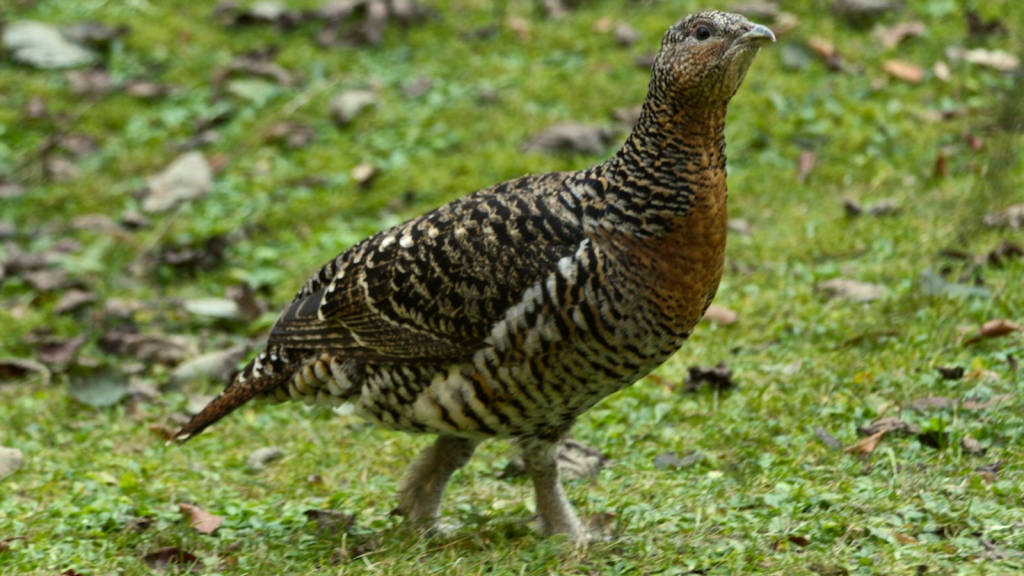
There’s a stark difference between male and female capercaillies. Males are nearly twice the size of females and sport dark, glossy plumage with a distinctive red eyebrow. Females, on the other hand, are smaller with mottled brown feathers that provide excellent camouflage. This size difference is one of the most extreme examples of sexual dimorphism among bird species in Europe.
Ancient Gaelic Name
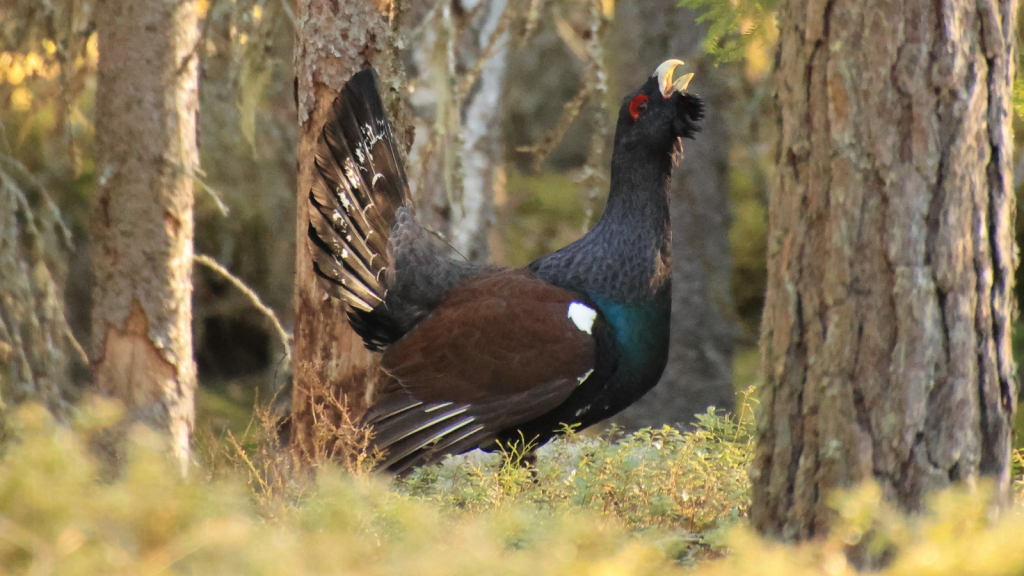
The name “capercaillie” comes from the Gaelic “capull coille,” which means “horse of the woods.” This name likely refers to the bird’s large size and the male’s horse-like neighing call during mating displays. In some parts of Scotland, they’re also known as “cock of the woods” or “wood grouse.”
Impressive Diet
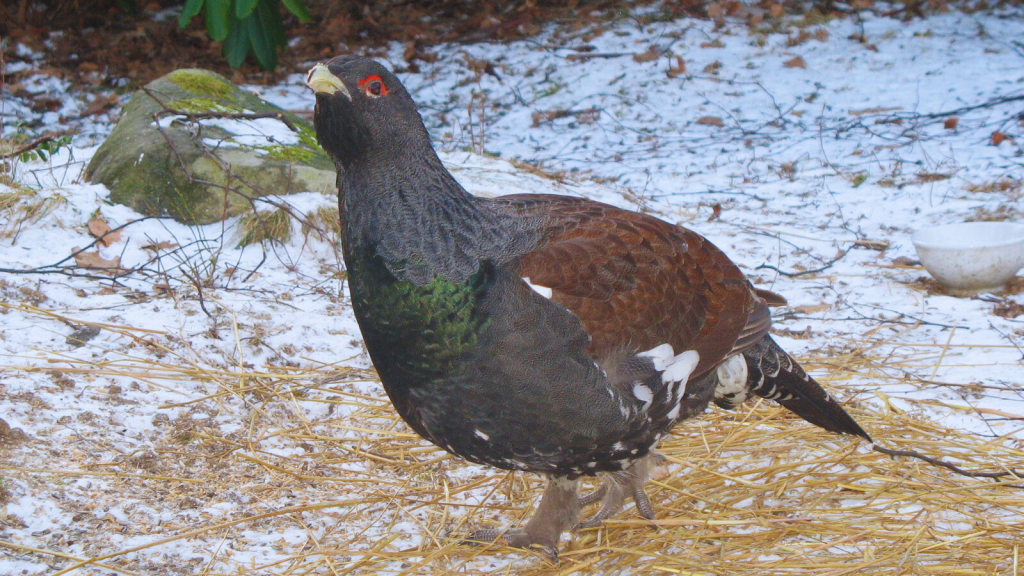
Capercaillies have a varied diet that changes with the seasons. In winter, they primarily eat pine needles, which most animals find indigestible. Their specialised digestive system allows them to extract nutrients from this tough food source. During summer, they supplement their diet with berries, insects, and other plant matter found on the forest floor.
Elaborate Mating Ritual
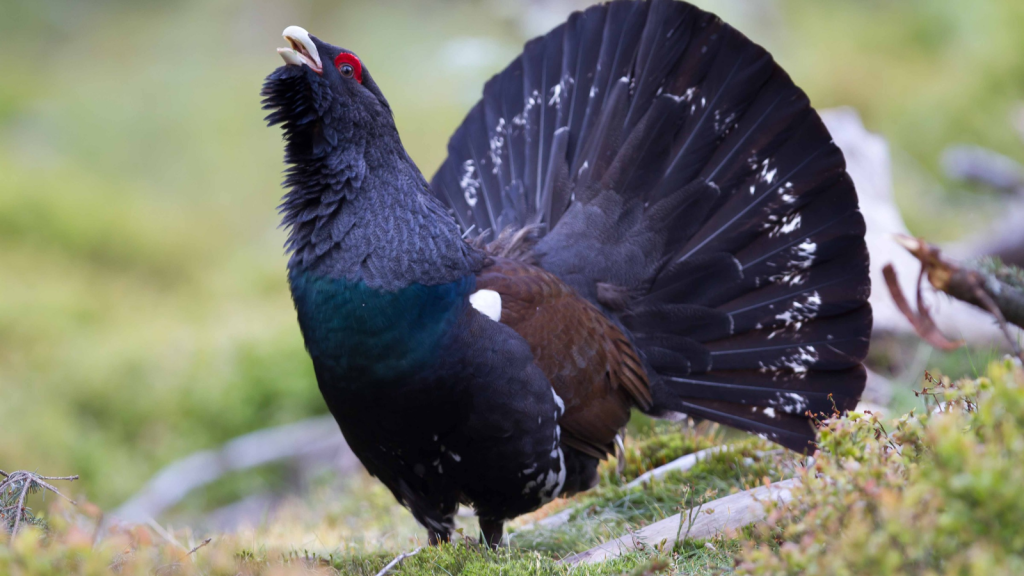
Male capercaillies perform an intricate mating display known as a “lek.” During this ritual, they fan their tails, droop their wings, and make a series of clicks, pops, and gurgling sounds to attract females. This spectacle usually occurs at dawn in spring. Interestingly, males become so engrossed in their display that they momentarily become deaf, making them vulnerable to predators.
Vulnerable Conservation Status
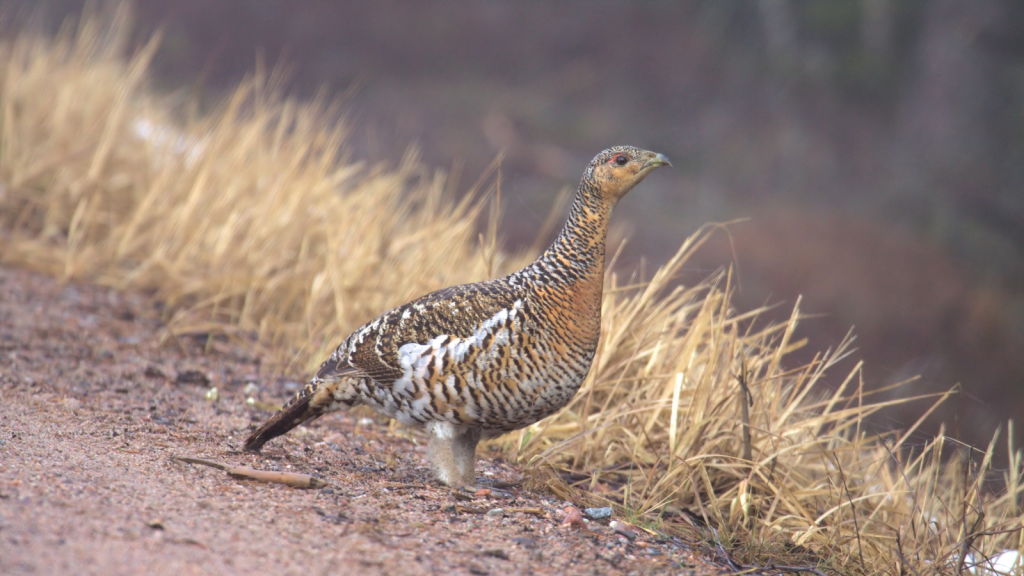
In the UK, capercaillies are classified as a Red List species, meaning they’re of the highest conservation priority. Their population has declined dramatically due to habitat loss, with only about 1,000 individuals left in Scotland. This represents a 50% decline in population over the past 30 years, highlighting the urgent need for conservation action.
Reintroduction Efforts
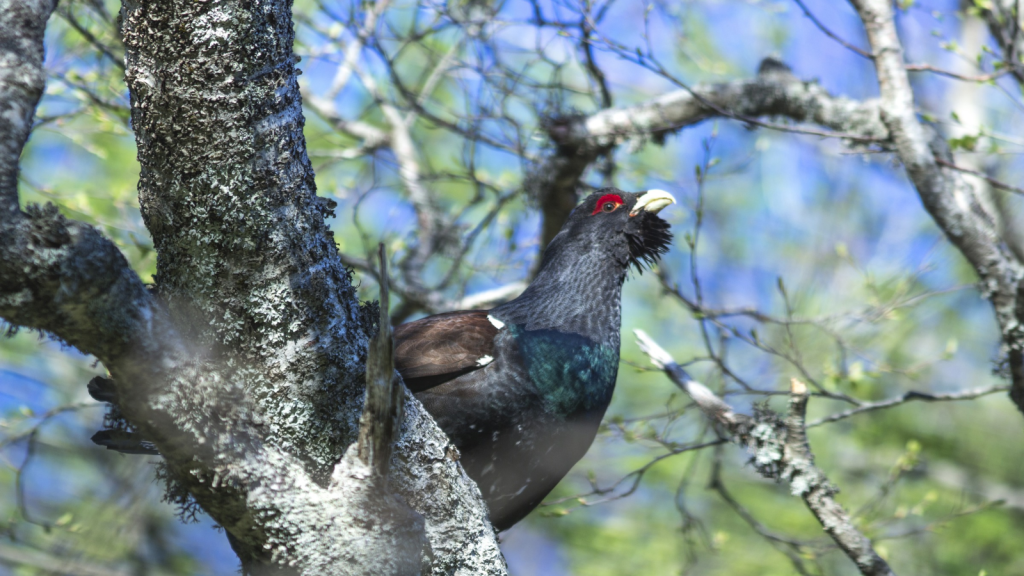
Capercaillies became extinct in Britain in the mid-18th century but were successfully reintroduced from Swedish stock in 1837. Despite initial success, their numbers have declined again in recent decades, prompting renewed conservation efforts. Current conservation strategies include habitat management, predator control, and careful monitoring of existing populations.
Unique Toe Adaptations
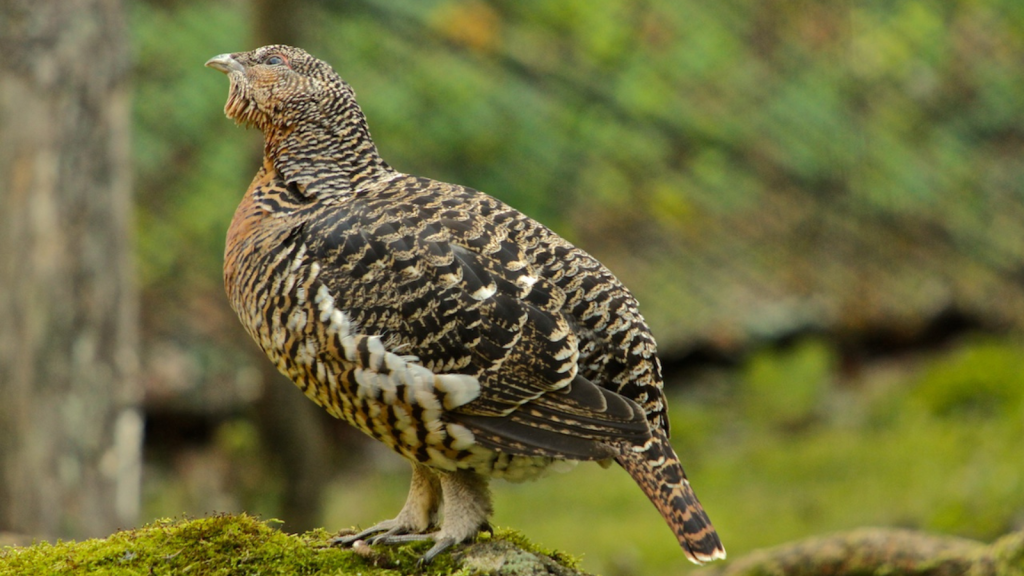
Capercaillies have special adaptations on their toes called “snowshoes.” These fringed scales along their toes help them walk on snow and grip tree branches, allowing them to thrive in their forest habitat year-round. This adaptation also enables them to roost in trees during harsh winter nights, providing protection from ground predators.
Impressive Lifespan
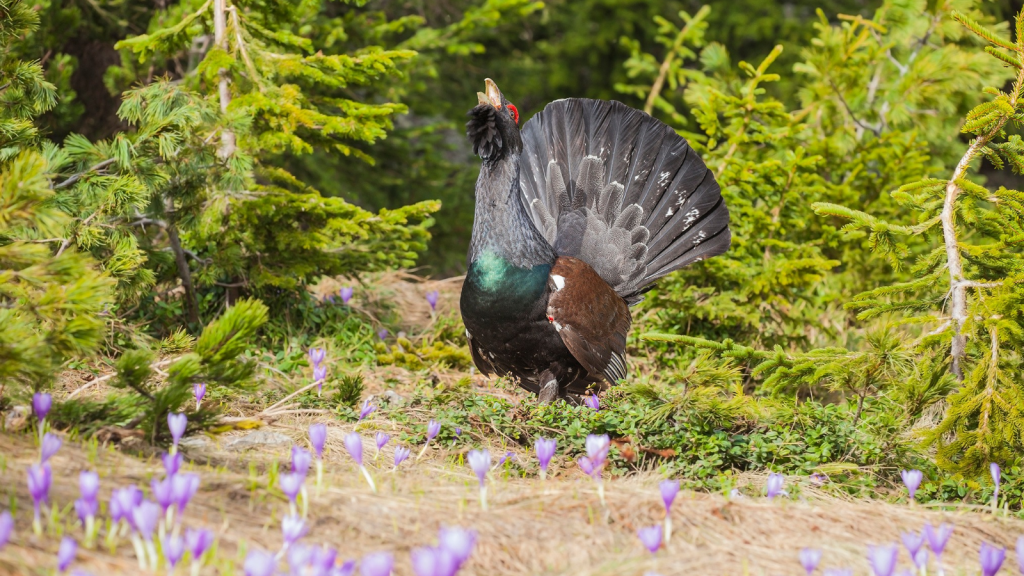
In the wild, capercaillies can live up to 10 years. However, their average lifespan is typically shorter due to predation and environmental pressures. In captivity, they have been known to live even longer. The oldest recorded captive capercaillie lived for 18 years, providing valuable insights into the species’ potential longevity under ideal conditions.
Nest on the Ground
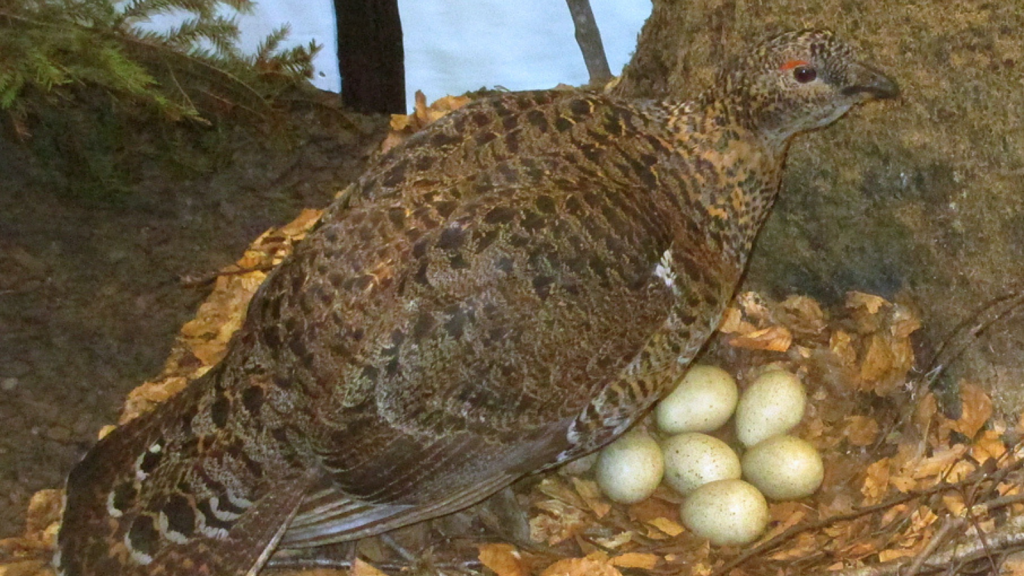
Despite being excellent tree-climbers, female capercaillies nest on the ground. They create a shallow scrape lined with plant material, usually hidden under dense vegetation for protection from predators. A typical clutch consists of 6-8 eggs, which the female incubates alone for about 26-29 days.
Chicks Are Precocial
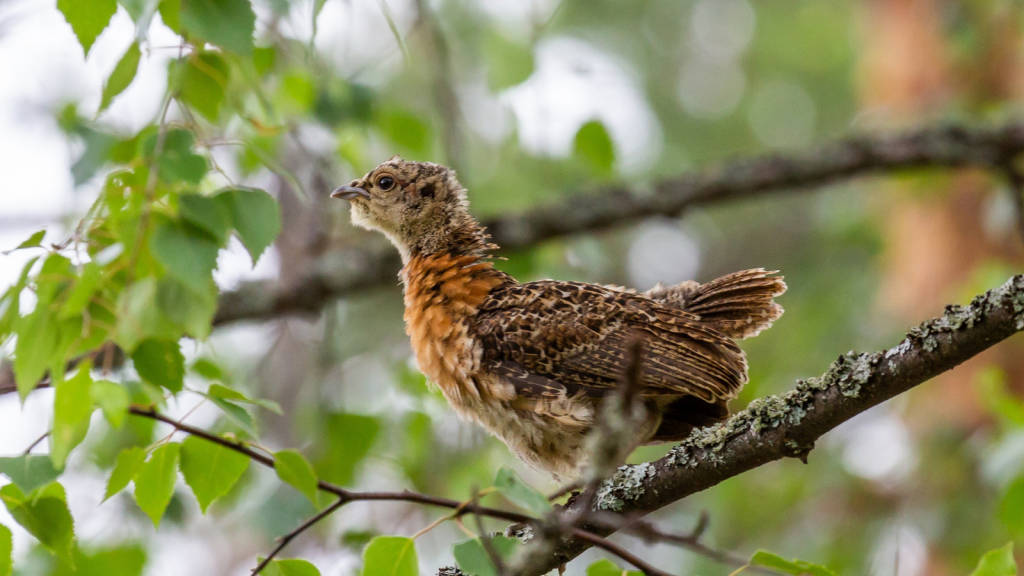
Capercaillie chicks are precocial, meaning they’re relatively mature and mobile from the moment they hatch. They can leave the nest and feed themselves within hours of hatching, although they remain under their mother’s care for several weeks. This early independence is crucial for survival in their challenging forest environment.
Habitat Specialists
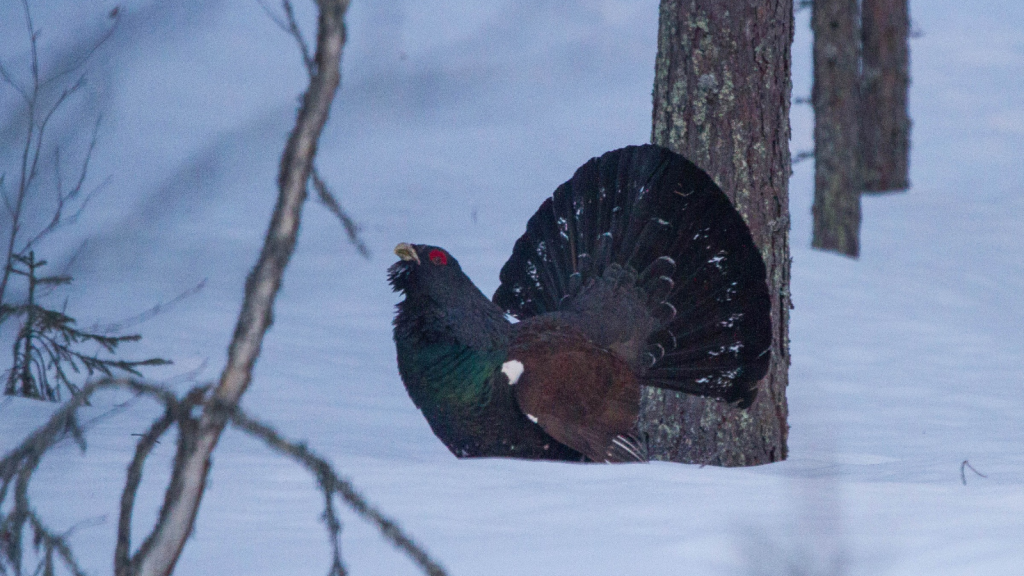
Capercaillies are strongly associated with native pine forests, particularly Scots pine. They require a mosaic of forest habitats, including areas of open canopy for lekking and dense undergrowth for nesting and feeding. The loss and fragmentation of these specific habitat requirements have contributed significantly to their population decline.
Ancient Hunting Tradition
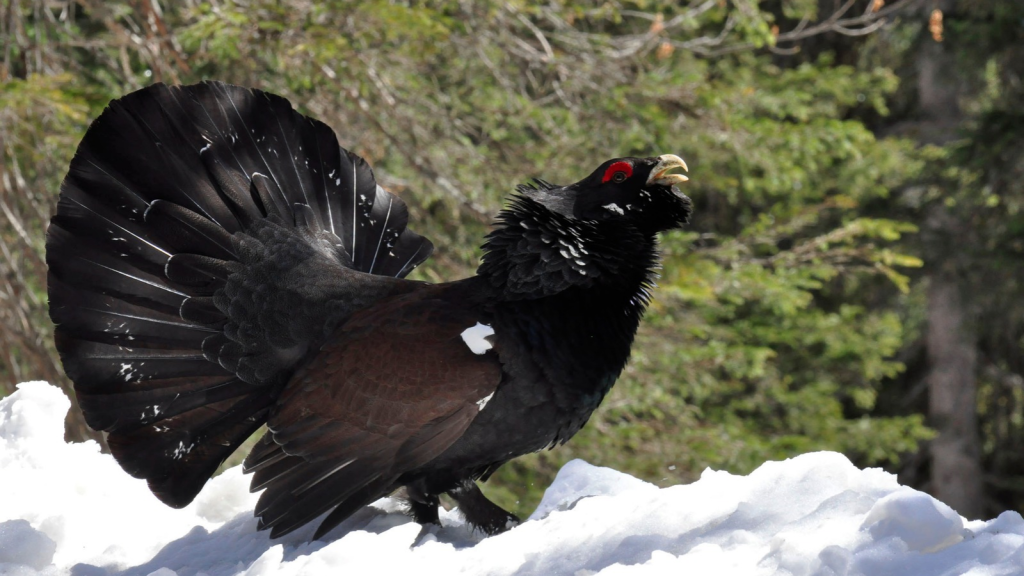
Capercaillies were once a prized game bird in Scotland, hunted by royalty and nobility for centuries. King James VI of Scotland (later James I of England) was particularly fond of capercaillie hunting, and records from the 16th century describe elaborate royal hunts in the Highlands. This tradition continued until the species’ initial extinction in Britain, contributing to its decline but also cementing its place in Scottish cultural history.
Extraordinary Hearing Abilities

Capercaillies possess remarkable hearing capabilities, with an ability to detect sounds at frequencies far beyond human range. Their ears are uniquely adapted to pick up low-frequency sounds, allowing them to hear potential predators from great distances. Interestingly, during their mating displays, males temporarily lose their hearing sensitivity – a phenomenon known as ‘display deafness’ – which is thought to be an adaptation to prevent them from damaging their own hearing with their loud calls.
Excellent Flyers Despite Size
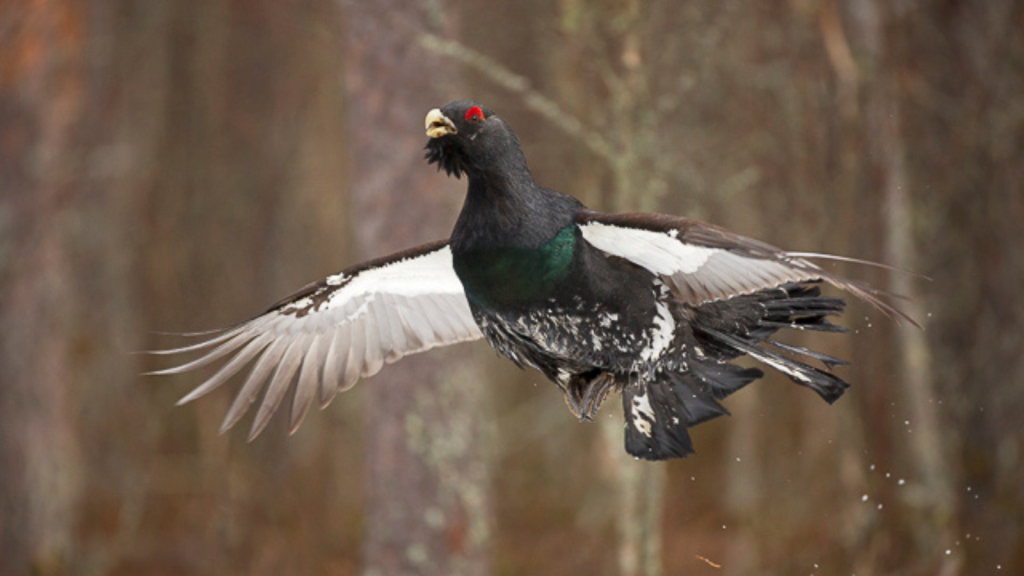
Despite their large size, capercaillies are surprisingly agile flyers. They can navigate through dense forest with ease and are capable of rapid, powerful flight when necessary, especially to escape predators. Their flight speed can reach up to 65 km/h, an impressive feat for a bird of their size.

